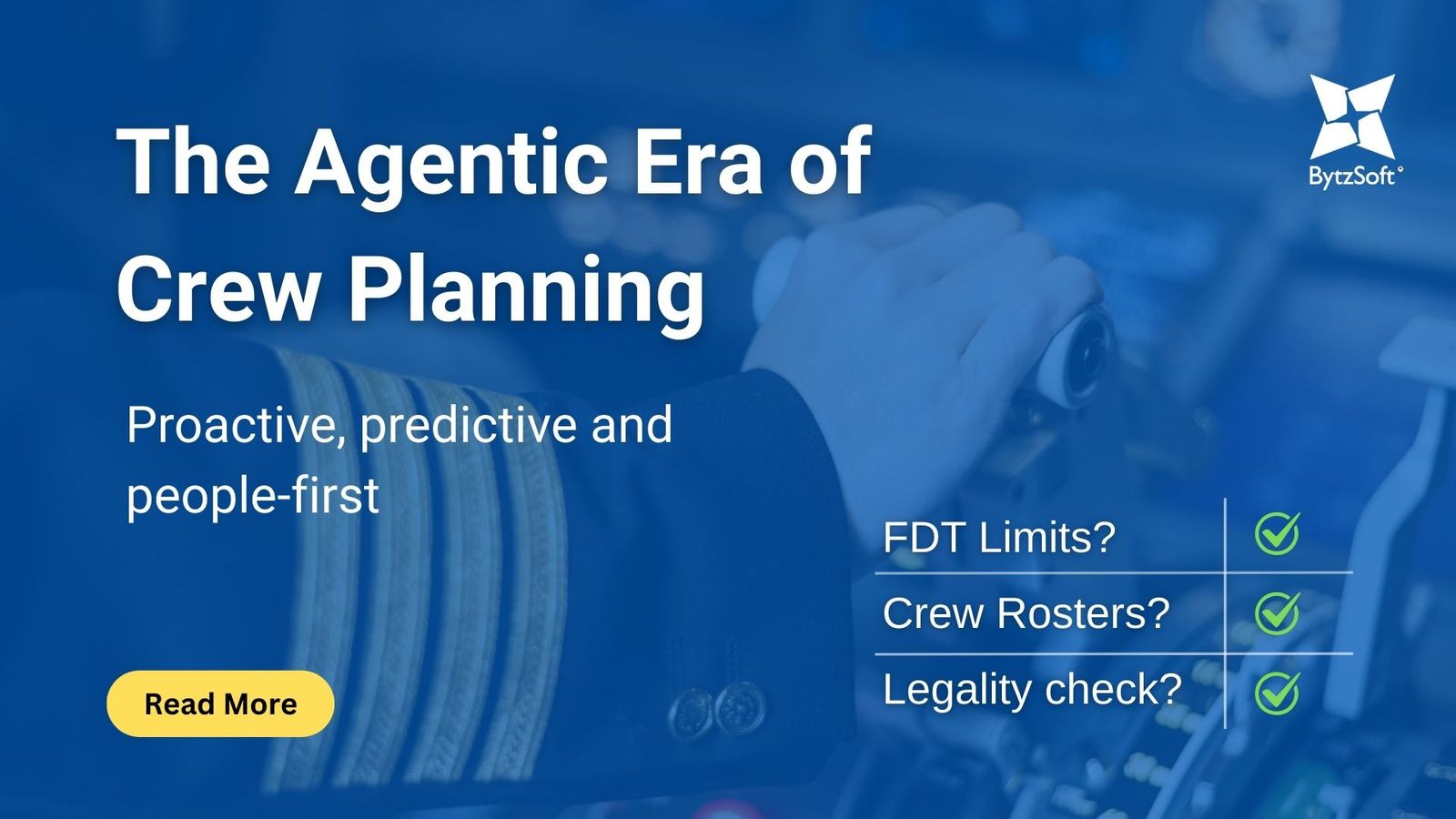Executive Summary
For decades, crew planning in aviation has been mostly about following the rules: tracking hours, giving rest, and publishing rosters. But today, that’s not enough. Airlines are struggling with fatigue, high crew turnover, and rising costs all while safety has to remain the top priority.
The next step is smarter, agentic planning. With AI and predictive systems, crew planning can go from reactive to proactive predicting fatigue before it happens, balancing crew preferences with operations, and adapting instantly when things go wrong. The future is agentic: planning that doesn’t just follow rules but thinks ahead.
What is Agentic AI?
Agentic AI refers to artificial intelligence systems that don’t just respond to instructions but can act with autonomy, making decisions proactively to achieve a goal.
Unlike traditional AI (which waits for inputs and gives outputs), Agentic AI:
- Anticipates future scenarios using predictive modelling
- Adapts in real time when conditions change
- Acts with a degree of independence while staying aligned with human oversight
1. Where Crew Planning Stands Today
· Mostly seen as paperwork.
· Still done with old systems or manual methods.
· Focus is only on meeting DGCA/FAA/EASA duty rules.
· Big problems: fatigue, unhappy crew, wasted hours, and chaos during delays.
2. Why This Model Fails
· Following rules ≠ rested crews.
· Pilots and cabin crew want rest and predictable schedules not just compliance.
· More bases, fleets, and routes = too complex for manual planning.
· Other parts of aviation use AI crew planning lags behind.
3. Why Fatigue Prediction Matters
Fatigue is linked to 15–20% of aviation incidents (ICAO). Static rosters can’t measure:
· Body clock shifts
· Sleep/wake patterns
· Time zone changes
· Duty intensity
AI can. Agentic systems use these insights to build rosters that actively reduce fatigue and boost safety.
4. Business Wins of Smarter Crew Planning
· Safer operations → goes beyond minimum compliance.
· Happier crew → lower attrition, higher trust.
· Efficiency → less overtime, fewer last-minute changes.
· Cost savings → smoother ops, fewer reserves.
· Stronger brand → reputation for safety + crew care.
5. BytzSoft’s Agentic Approach
We believe in Human + AI + Agentic planning. Managers bring expertise, while AI and predictive tools make the system proactive.
What we’re building:
· Auto-rostering (rules + AI).
· Fatigue prediction powered by science + ops data.
· Preference-based scheduling for fairness.
· Real-time disruption handling.
· Cloud-native platform for airlines, charters, and helicopters.
6. Looking Ahead: The Future is Agentic
· Fatigue prediction will soon be required, not optional.
· Crew well-being will be a business KPI.
· Standalone systems will merge into integrated platforms.
· Agentic systems will predict, prevent, and propose — not just schedule.
· Airlines that act now will lead in safety, efficiency, and crew loyalty.
Conclusion
The move from static rosters to fatigue-aware, agentic planning is no longer “someday” it’s happening now.
At BytzSoft, we’re driving this change so airlines, charters, and helicopter operators can achieve safer, smarter, and more human-cantered flying.
🔹 Learn more: www.bytzsoft.aero
🔹 Let’s shape a future where crew well-being = operational excellence.
Quick definitions:
- Generative AI = creates new things (content, reports, insights).
- RAG = retrieves + generates (answers grounded in real, external knowledge).
- Agentic AI = acts proactively (predicts, adapts, and decides with autonomy).

